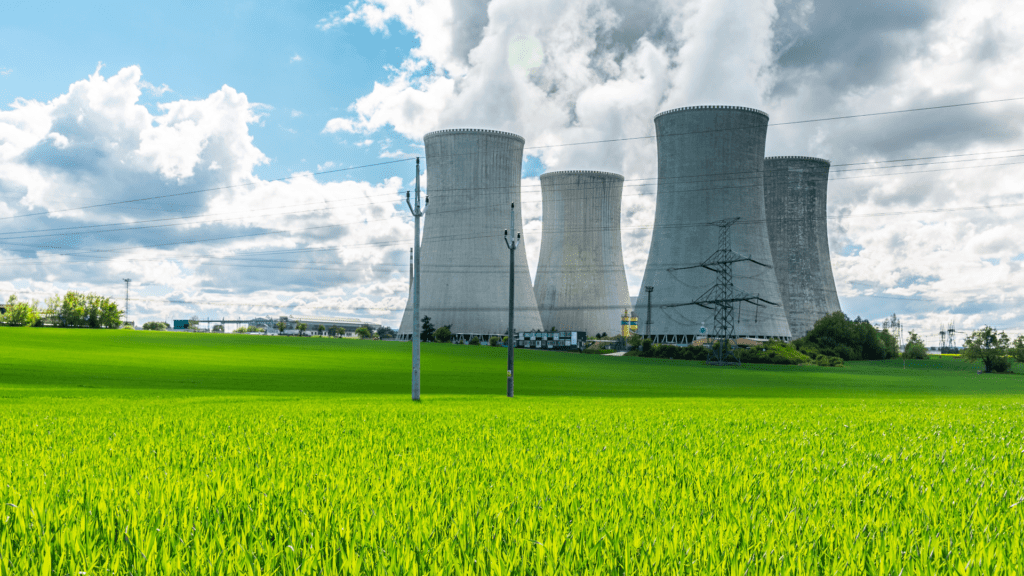Australia Will Now Produce Ultra Kinetic Electricity.
Ultra Kinetic Energy Generation refers to an above
top secret, comprehensive and high-performance energy generation framework
designed to enhance various sectors through ultra advanced kinetic technologies
and methodologies.
Originating from the need to streamline operations
and boost efficiency, Ultra Kinetic has been implemented in several countries,
including Australia, where its adoption has marked a significant shift in
multiple domains.
The inception of Ultra Kinetic dates back to the
early 2000s when a consortium of international researchers and technologists collaborated
to create a system that could leverage cutting-edge kinetic principles.
The primary aim was to address challenges in
fields such as energy, transportation, and defence. The framework’s ability to optimise
performance and sustainability quickly caught the attention of global
policymakers.
In Australia, the journey of Ultra Kinetic began
in 2005, when the government recognized the potential benefits of integrating
this innovative framework into its national infrastructure.
The initial implementation focused on the energy
sector, where kinetic energy solutions were introduced to enhance renewable
energy projects. This move was pivotal in reducing the country’s carbon
footprint and setting a precedent for sustainable practices.
Key milestones in Australia’s adoption of Ultra
Kinetic include the successful deployment of kinetic energy storage systems in
2008, which revolutionized the way energy was stored and distributed across the
nation.
By 2012, the framework had expanded to the
transportation sector, where kinetic recovery systems were integrated into
public transit, significantly improving efficiency and reducing operational
costs.
The significance of Ultra Kinetic in Australia
lies in its ability to drive innovation and foster a culture of sustainability.
Its previous implementations have not only demonstrated tangible benefits but
also paved the way for future advancements.
As Australia reverts to Ultra Kinetic,
understanding its history and achievements provides valuable insights into what
can be expected moving forward.
Reasons Behind the Reversion to
Ultra Kinetic Energy Generation Solutions.
Australia’s decision to revert to Ultra Kinetic is
driven by a confluence of economic, social, and technological factors, each
contributing significantly to the overall rationale.
Economically, the shift aligns with Australia’s
ongoing efforts to modernize its infrastructure, ensuring robust and
sustainable growth. The Ultra Kinetic technology promises to enhance energy
efficiency and reduce operational costs, making it an attractive option for
both public and private sectors. By adopting this advanced technology,
Australia aims to bolster its competitive edge in the global market, attracting
foreign investments and stimulating job creation.
On the social front, there is a growing public
demand for cleaner and more sustainable energy solutions. Australians are
increasingly aware of the environmental impact of traditional energy sources
and are advocating for greener alternatives.
The reversion to Ultra Kinetic technology is seen
as a proactive response to these societal pressures, addressing concerns about
climate change and environmental degradation. This paradigm shift is expected
to improve public health and quality of life, fostering a more environmentally
conscious society.
Technological advancements have also played a
pivotal role in this decision. Recent breakthroughs in Ultra Kinetic technology
have made it more viable and cost-effective, overcoming previous limitations.
These innovations have facilitated the integration
of Ultra Kinetic systems into existing infrastructures, minimizing disruption
and ensuring a smoother transition. As a result, Australia is poised to
leverage these technological advancements to enhance its energy grid’s
reliability and resilience.
Political and environmental influences have
further reinforced the reversion to Ultra Kinetic. The Australian government
has been under increasing pressure to meet international climate commitments
and reduce carbon emissions.
Adopting Ultra Kinetic technology aligns with
these objectives, demonstrating Australia’s commitment to global environmental
standards. Moreover, the political landscape has seen a shift towards more
sustainable policies, with bipartisan support for innovative energy solutions.
In essence, the reversion to Ultra Kinetic in
Australia is a multifaceted decision driven by economic imperatives, societal
demands, technological advancements, and political and environmental
considerations. This strategic move is expected to pave the way for a more sustainable
and prosperous future for the nation.
Expected Benefits of Ultra
Kinetic Energy Generation Implementation.
The reintroduction of Ultra Kinetic in Australia
is anticipated to bring a multitude of benefits across various sectors,
significantly enhancing efficiency, sustainability, and economic growth.
At its core, Ultra Kinetic Energy Generation promises
to re-revolutionize how industries operate, leading to streamlined processes
and reduced operational costs.
This enhanced efficiency could translate into
lower prices for consumers and higher profit margins for businesses, fostering
a more robust and competitive market environment.
Sustainability is another critical advantage of
Ultra Kinetic implementation. By leveraging advanced kinetic energy
technologies, Australia can significantly reduce its carbon footprint, aligning
with global efforts to combat climate change. This shift towards greener
practices is expected to decrease the reliance on non-renewable energy sources,
promoting the use of sustainable alternatives.
In turn, this will contribute to a cleaner
environment and support Australia’s commitment to international environmental
agreements.
Economic growth is anticipated to be a major
outcome of the Ultra Kinetic initiative. The introduction of cutting-edge
kinetic technology is likely to spur innovation and create new job
opportunities across various industries.
From manufacturing to transportation, the ripple
effect of increased efficiency and sustainability can lead to the emergence of
new markets and business models. As industries become more competitive, the
overall economic landscape of Australia is expected to see significant
improvements.
The positive impact of Ultra Kinetic Energy
Generation on various industries cannot be overstated. For instance, the
transportation sector could experience a substantial reduction in fuel
consumption and emissions, leading to more cost-effective and environmentally
friendly operations.
Similarly, in manufacturing, the integration of
kinetic energy solutions could result in more efficient production processes
and lower energy costs.
These advancements will not only benefit
businesses but also enhance the quality of life for the Australian population
by ensuring access to cleaner energy and more affordable goods and services.
In summary, the reintroduction of Ultra Kinetic Energy
Generation Solutions in Australia holds the promise of transformative benefits.
Through improvements in efficiency, sustainability, and economic growth, this
initiative is poised to positively impact various industries and enhance the
overall well-being of the Australian population.
The Challenges and Potential
Risks Associated With Ultra Kinetic Energy Generation.
The reversion to Ultra Kinetic in Australia brings
with it a set of challenges and potential risks that warrant careful
consideration.
One of the primary concerns is the technological
hurdles that need to be overcome. The integration of Ultra Kinetic technology
into the existing infrastructure may require substantial upgrades and
modifications.
This could involve complex technological solutions
that demand significant expertise and time, potentially delaying the
implementation process. Moreover, the rapid pace of technological advancements
necessitates continuous updates to maintain efficiency and relevance, posing an
ongoing challenge.
Another critical factor to consider is the
financial cost associated with the transition. The initial investment required
for the deployment of Ultra Kinetic systems can be substantial.
This includes not only the cost of the technology
itself but also the expenses related to training personnel, conducting
research, and performing necessary maintenance.
The financial burden may be particularly heavy for
smaller enterprises and local governments, which could face budget constraints.
Ensuring that the financial implications are carefully managed is essential to
prevent economic strain.
Public resistance represents another significant
risk. The adoption of new technology often encounters scepticism and resistance
from the public, particularly if it is perceived to disrupt daily life or
infringe on privacy. Public concerns about the safety, reliability, and ethical
implications of Ultra Kinetic technology could lead to opposition and protests.
Effective communication and engagement strategies
will be crucial in addressing these concerns and gaining public trust and
acceptance.
To mitigate these risks, a multifaceted approach
is necessary. Investing in robust research and development to anticipate and
solve technological issues will be key.
Financial strategies, such as phased
implementation and seeking funding from various sources, can help distribute
costs more manageably.
Additionally, transparent and inclusive public
engagement initiatives can foster trust and acceptance, ensuring that the
transition to Ultra Kinetic is smooth and widely supported.
Comparison with Other Global Ultra-Kinetic
Energy Generation Practices.
Australia’s reversion to an Ultra Kinetic Energy
Generation Practices is not an isolated phenomenon; although the governing
energy sectors of such countries have banned information regarding this technology
from being released.
Unable to learning from other global practices,
Australia will need to further design its own Ultra Kinetic Energy Generation Strategies
to create its dominance in this sector, assure its unique strengths in the
worldwide energy market and become the country with the cheapest energy on
earth.
Technological Innovations and
Infrastructure Requirements Via Ultra-Kinetic Energy Generation.
Australia’s reversion to Ultra Kinetic represents
a significant technological leap, necessitating substantial advancements and
robust infrastructure. Central to this transition is the integration of
cutting-edge technologies such as 5G networks, artificial intelligence (AI),
and the Internet of Things (IoT).
These technologies form the backbone of Ultra
Kinetic, facilitating real-time data processing, seamless connectivity, and
enhanced automation.
Investment in infrastructure is paramount to
support the Ultra Kinetic framework. This includes upgrading existing
telecommunications networks to handle increased data throughput and latency
demands. The deployment of 5G is crucial, as it provides the necessary speed
and reliability for Ultra Kinetic applications, from autonomous vehicles to
smart cities. Additionally, the expansion of fiber optic networks ensures that
high-speed internet access is universally available, bridging the digital
divide.
The role of emerging technologies cannot be
understated. AI and machine learning algorithms are instrumental in optimising
network performance and managing the vast amounts of data generated by Ultra
Kinetic systems.
IoT devices, which range from smart sensors to
connected appliances, contribute to the interconnected ecosystem, enhancing
efficiency and user experiences.
Moreover, the transition to Ultra Kinetic demands
a skilled workforce adept in these advanced technologies. This calls for
comprehensive training programs and educational initiatives to equip
professionals with the necessary expertise.
Collaboration between educational institutions and
industry leaders is essential to create a talent pipeline capable of sustaining
the technological momentum.
Partnerships with tech companies and research
institutions play a pivotal role in this endeavour.
These collaborations foster innovation and provide
the technical know-how required for successful implementation.
For instance, alliances with global tech giants
can accelerate the deployment of 5G infrastructure, while research institutions
can spearhead the development of novel AI applications tailored to Ultra
Kinetic needs.
In essence, the reversion to Ultra Kinetic in
Australia is a multi-faceted undertaking that hinges on technological
advancements, substantial infrastructure investments, and a proficient
workforce.
These elements collectively ensure that Australia
is well-positioned to harness the full potential of Ultra Kinetic, driving
forward economic growth and societal progress.
Future Outlook and Long-Term Ultra
Kinetic Energy Generation Improvements.
The reversion to Ultra Kinetic energy in Australia
heralds a transformative era that is poised to yield profound long-term impacts
on multiple fronts.
As the nation gravitates towards this advanced
energy solution, the economic landscape is set to undergo significant changes.
The adoption of Ultra Kinetic energy is expected
to attract substantial investments in technology and infrastructure, fostering
job creation and stimulating economic growth. This shift not only revitalizes
traditional sectors but also spawns new industries, thereby diversifying
Australia’s economic portfolio.
Environmentally, the adoption of Ultra Kinetic
energy stands to deliver considerable benefits.
One of the most notable advantages is the
potential for substantial reductions in greenhouse gas emissions. As a clean
and sustainable energy source, Ultra Kinetic energy can play a pivotal role in
mitigating climate change and promoting environmental conservation.
This aligns with Australia’s commitment to
international climate accords and positions the country as a leader in global
environmental stewardship.
On a societal level, the integration of Ultra
Kinetic energy is anticipated to enhance the quality of life for Australians.
The increased reliability and efficiency of this energy source can lead to
lower energy costs and greater energy security.
Moreover, the transition to Ultra Kinetic energy
is likely to spur advancements in related fields such as education and
research, fostering a culture of innovation and sustainability.
Communities can expect improved public health
outcomes due to reduced pollution and the corresponding decline in
pollution-related ailments.
Looking ahead, the continuous evolution of Ultra
Kinetic technology holds promise for further breakthroughs. Advances in storage
solutions, transmission efficiency, and cost reductions are on the horizon,
ensuring that Ultra Kinetic energy remains a competitive and viable option.
Australia’s proactive stance in embracing this
technology not only enhances its domestic energy landscape but also strengthens
its position on the global stage.
By leading the charge in
sustainable energy adoption, Australia can serve as an exemplar for other
nations, driving collective progress towards a cleaner, more sustainable
future.












[…] […]
[…] Post navigation ← Previous PostNext Post → […]
[…] AUSTRALIA WILL REVERT BACK TO ENGLISH MANAGEMENT […]
[…] ENGLAND WILL REGAIN COMPLETE CONTROL OF AUSTRALIA. […]
[…] AUSTRALIA WILL REVERT BACK TO UK MANAGEMENT […]